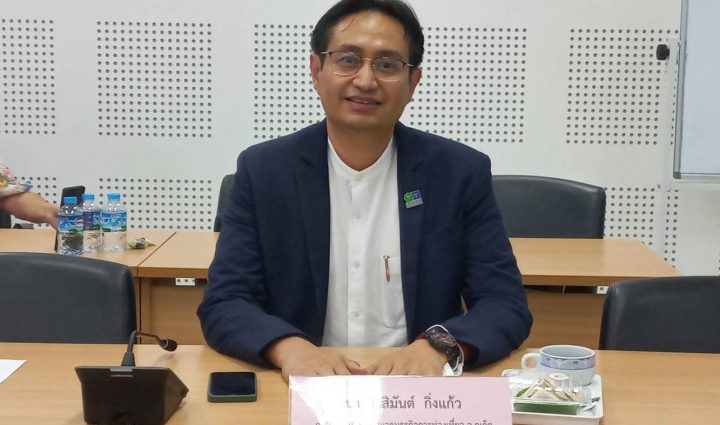
Phuket is targeting over 14 million international and domestic tourists with tourism-related revenue expected to exceed 200–300 billion baht by the end of this year, according to Phuket Tourist Association (PTA).
Phuket was hit heavily by the Covid-19 pandemic during 2020–2021 but tourists started returning once the Sandbox scheme kicked off in July, 2021.
Speaking to the Bangkok Post about Phuket’s tourism plan for 2023-2024, Rangsiman Kingkaew, deputy president of the PTA, said about 700,000–800,000 tourists came to Phuket monthly before the Covid-19 pandemic started in 2019.
A total of 14 million tourists, including 10 million foreigners, visited Phuket, generating tourist revenue worth up to 440 billion baht, the second largest after Bangkok, he said.
Now tourism on Phuket has improved about 80% [compared to tourist arrivals in 2019] as some 500,000-600,000 tourists are arriving monthly, he said.
“Phuket could make more than 200-300 billion baht from tourism by the end of 2023 with more than 14 million tourists expected,” Mr Rangsiman said.
The number of foreign tourists arriving in Phuket from many countries exceeds the number before Covid-19 hit.
The number of German tourists has grown over 150% compared to the pre-Covid-19 period, Russians 130%, Australians 97% and Kazakhs 3,000%.
Speaking of regular visitors from India, Mr Rangsiman said some Indian airlines have gone bankrupt, resulting in a smaller number of South Asian tourists coming to Phuket.
Kazakhstan was the first country to operate direct flights to Phuket during its Sandbox scheme which allowed international tourists to visit during the pandemic. Now Kazakhs have climbed to one of the top 10 visitors in Phuket by nationality, Mr Rangsiman said.
Muslim visitors from the Middle East are another target. In the future, Phuket might be able to position itself as a Muslim-friendly destination as it is well equipped with services suitable for halal practice.
From November last year to June 16, the three largest groups of international visitors were Russians followed by Chinese, Indians, Australians and Kazakhs.
Roadshow
Mr Rangsiman said Chinese tourists are likely to keep visiting Phuket during the current low season.
Reports said most international tourists take transit flights at airports in Dubai and Singapore where they embark on flights directly to Phuket.
Mr Rangsiman added that if Thailand’s national air-carrier provides more direct flights from international cities to Phuket, the resort island would gain even more visitors.
The association will push strategies to attract both domestic and international visitors to the resort island via a roadshow in Thailand, Asia-Pacific, Europe and the Middle East next year.
First, the PTA hopes to retain Phuket’s regulars from China, Russia, Australia, UK, Germany and other European countries. It will attend the tourism exhibition ITB Berlin, which is the world’s largest tourism trade fair, next March to connect its network with European suppliers.
Apart from the ITB Berlin, the PTA will also hold a roadshow in April in China. Data shows China’s economy has not bounced back from the pandemic, resulting in less international travel among its citizens.
In May, the PTA’s tourism roadshow will travel to Australia, another target group for arrivals during the low season.
Next month, the PTA will visit Russia to promote its tourism roadshow.
Mr Rangsiman said Russian tourists tend to stays for weeks. Some holiday in Phuket for a month to 90 days.
“Russian nationals are granted a 90-day tourist visa to Thailand. Due to the political unrest in their country, many have sought villas in Phuket,” he added.

A family of tourists relax on Karon Beach, the longest beach in Phuket. The resort island expects to welcome 14 million visitors this year. ACHADTHAYA CHUENNIRAN
New targets
The PTA also hopes to attract new target groups. The number of tourists from India, Kazakhstan, Saudi Arabia and Oman has risen since the pandemic ended.
Direct flights from such countries play a big role in bringing Muslim tourists to Phuket.
Mr Rangsiman said India’s GoAir and IndiGo launched direct flights to Phuket a few years before the Covid-19 pandemic hit and now Indians are one of the largest groups of visitors.
A new flight directly from Saudi Arabia to Phuket might be launched this year. Meanwhile, more flights from Taiwan, Hong Kong and Vietnam also visited the island in May.
Another potential market for the PTA is South African tourists who usually visit Phuket during the low season. Taking advantage of long-haul flights from Africa to Phuket, many South African tourists visit the island and can tend to stay for weeks.
The PTA also will work towards promoting Phuket’s tourism to Thai nationals.
Even though the resort island is known for its international tourists, Thai tourists still make up over 30% of overall visitors by nationality, he said.
Mr Rangsiman said Phuket has welcomed Thai tourists in every season and the island survived the pandemic crisis by receiving attention from locals rather than foreigners.
He added the PTA also will organise its tourism roadshows in major regional provinces such as Bangkok, Udon Thani, Khon Kaen and Songkhla to attract more Thai tourists to travel to Phuket during the low season.

